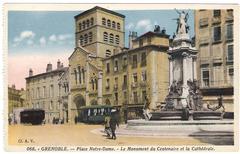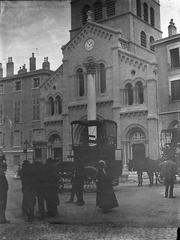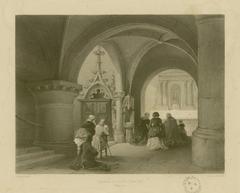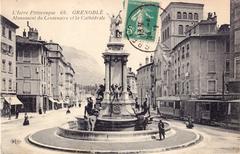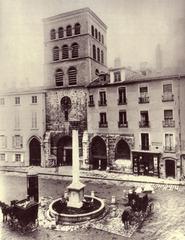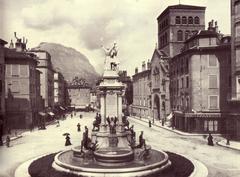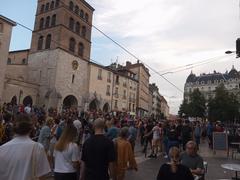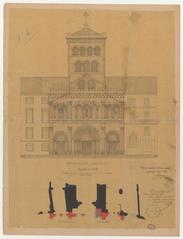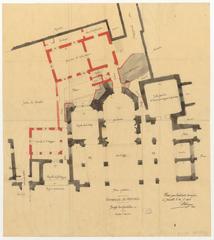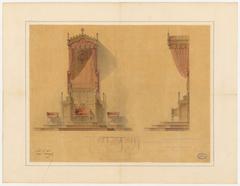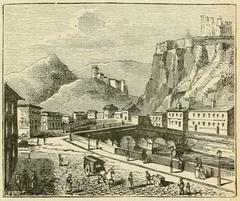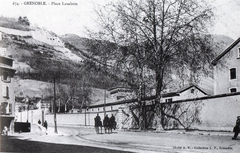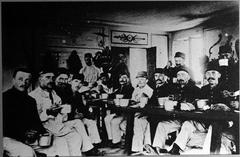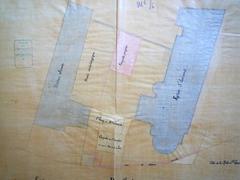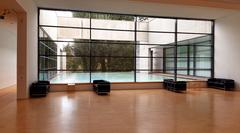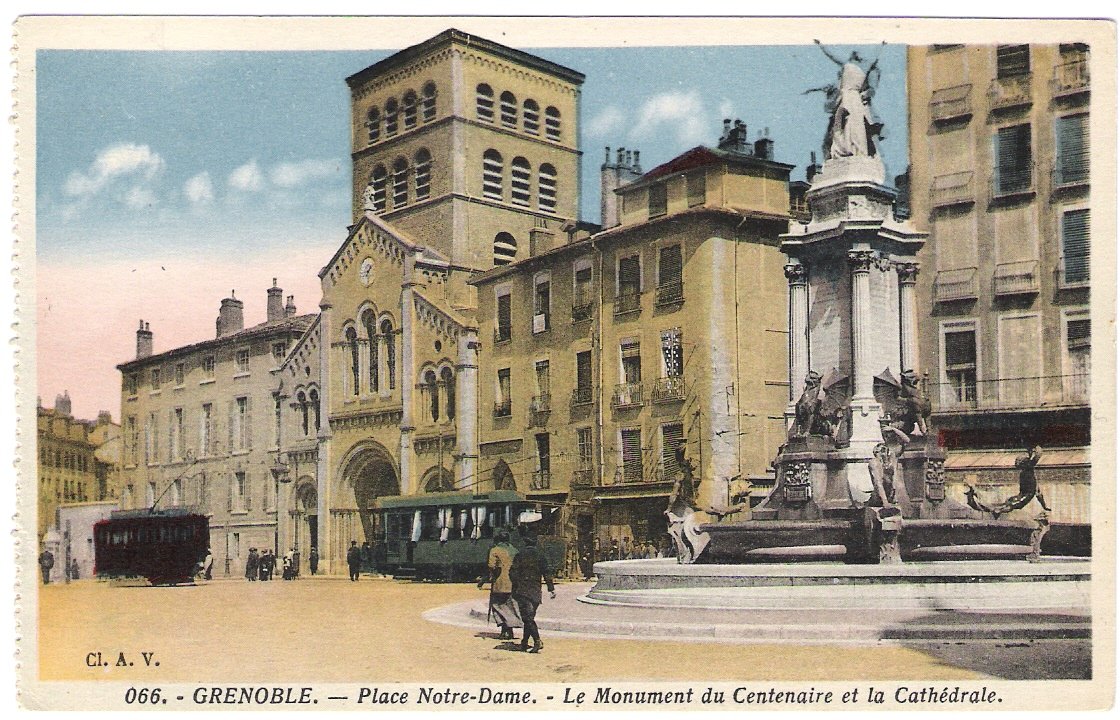
Grenoble Cathedral: Visiting Hours, Tickets, and Historical Sites Guide
Date: 14/06/2025
Introduction: Grenoble Cathedral’s Enduring Legacy
Grenoble Cathedral, officially called Cathédrale Notre-Dame de Grenoble, stands as a monumental testament to over 1,500 years of religious, architectural, and cultural history. Located in the heart of Grenoble’s historic center, it is not only a masterpiece of Gothic architecture but also a vibrant hub for the city’s spiritual and communal life. From its early Christian foundations to its role today as the seat of the Bishop of Grenoble, the cathedral embodies the evolution of faith, art, and community in the region (cityzeum.com; grenoble-tourisme.com).
This comprehensive guide presents everything you need to know about visiting Grenoble Cathedral: hours of operation, ticketing, accessibility, highlights of its history and architecture, practical travel tips, and suggestions for exploring nearby attractions. Whether you are a history buff, an architecture enthusiast, or a spiritual seeker, this resource will help you make the most of your visit to one of Grenoble’s most iconic sites (cathedraledegrenoble.com).
Table of Contents
- Origins and Early Foundations
- Medieval Construction and Architectural Evolution
- Artistic Treasures and Notable Features
- Religious and Cultural Significance
- Visiting Grenoble Cathedral: Hours, Tickets & Accessibility
- Guided Tours and Visitor Experience
- Nearby Attractions and Travel Tips
- Frequently Asked Questions (FAQ)
- Summary of Key Information
- Sources and Further Reading
Origins and Early Foundations
The grounds of Grenoble Cathedral are steeped in early Christian history. Beneath its parvis, archaeological discoveries in 1989 revealed the remains of a 4th- or 5th-century paleo-Christian baptistery, making it one of the oldest such sites in France (cityzeum.com). This highlights the area’s importance as a center for Christian worship since the late Roman Empire.
Next to the cathedral, the Romanesque Église Saint-Hugues, built in the 11th century, forms a rare double church system. This configuration offers a tangible record of the evolution from early Christian worship spaces to the more elaborate medieval cathedrals (grenoble-tourisme.com).
Medieval Construction and Architectural Evolution
The main edifice of Grenoble Cathedral was constructed in the 13th century, during the city’s emergence as a spiritual and political center. Built in the Gothic style, the cathedral features pointed arches, ribbed vaults, and expansive stained glass windows designed to evoke spiritual transcendence (nomads-travel-guide.com; touristplatform.com).
Significant architectural changes continued through the centuries. The 19th-century addition of an eclectic façade (since removed to reveal the original Romanesque exterior) and the preservation of the flamboyant Gothic ciborium illustrate the cathedral’s layered history (cityzeum.com). Restoration efforts in the late 20th century returned the building to its earlier appearance, while modern conservation ensures its continued vitality (Wikipedia; cathedraledegrenoble.com).
Artistic Treasures and Notable Features
Grenoble Cathedral is home to a number of significant artistic and architectural features:
- Grand Aristide Cavaillé-Coll Organ: Built in 1890, this renowned instrument is a highlight for music lovers and is frequently featured in concerts (cityzeum.com).
- Stained Glass Windows: Many of the vibrant stained glass windows date from the 19th century and depict biblical scenes and saints, filling the nave with colored light (evendo.com).
- Flamboyant Gothic Ciborium: An ornate 15th-century structure above the altar, notable for its intricate carvings and resilience through historical upheavals (Wikipedia).
- Romanesque and Gothic Fusion: The juxtaposition of Romanesque solidity and Gothic elegance provides a visual narrative of ecclesiastical architecture’s evolution (PlanetWare).
Religious and Cultural Significance
As the seat of the Bishop of Grenoble, the cathedral remains the epicenter of Catholic life in the city. Over the centuries, it has hosted countless religious ceremonies, including major liturgical celebrations, ordinations, and community gatherings (cityzeum.com). The cathedral also participates in citywide cultural events, concerts, and exhibitions, serving as a living symbol of Grenoble’s unity and heritage.
Visiting Grenoble Cathedral: Hours, Tickets & Accessibility
- Visiting Hours: Open daily from 9:00 AM to 6:00 PM. Hours may vary during religious services or special events. It is advisable to consult the official cathedral website or local tourism boards for updates (triphobo.com).
- Tickets: Entry is free. Some guided tours, concerts, and special exhibitions may require a ticket (typically €3–€7).
- Accessibility: The main entrance is at ground level, and the cathedral is wheelchair accessible. Assistance for visitors with disabilities can be arranged on request.
Guided Tours and Visitor Experience
- Guided Tours: Available in multiple languages, tours provide in-depth insights into the cathedral’s history, art, and symbolism (The Tourist Checklist). Audio guides and informational brochures are also offered.
- Religious Services: Visitors are welcome to attend regular Masses and ceremonies. Schedules are posted at the entrance and online.
- Concerts and Events: The cathedral regularly hosts organ and choral concerts, as well as cultural events. Some may require advance booking (evendo.com).
Nearby Attractions and Travel Tips
- Historic Center: The cathedral is centrally located in Place Notre-Dame, surrounded by cafés, shops, and other landmarks.
- Other Sites: Don’t miss Église Saint-Hugues, the ancient baptistery, Musée de Grenoble, and the Musée de l’Ancien Évêché (PlanetWare).
- Getting There: Easily accessible by foot, public transport, or car (parking available near Jardin de Ville). The area is pedestrian-friendly (Snippets of Paris; Wildtrips).
Frequently Asked Questions (FAQ)
Q: What are Grenoble Cathedral’s visiting hours?
A: Typically 9:00 AM to 6:00 PM daily; check for seasonal changes and special events.
Q: Is there an entrance fee?
A: No, entry is free. Some special events or tours may require tickets.
Q: Is the cathedral accessible for visitors with limited mobility?
A: Yes, most areas are accessible; assistance is available upon request.
Q: Can I attend a service or concert?
A: Yes, Masses and concerts are open to the public; some concerts may have an admission fee.
Q: Are guided tours available?
A: Yes, guided tours and audio guides are offered in several languages.
Q: Are restrooms and amenities available?
A: No restrooms inside; public facilities nearby in the city center.
Q: Is photography allowed?
A: Photography is permitted without flash; be respectful during services.
Summary of Key Information and Visitor Tips
Grenoble Cathedral offers a rich, multifaceted experience:
- Open daily and free to enter
- Wheelchair accessible
- Guided tours and concerts available
- Surrounded by historic sites and amenities
- Ideal for history, architecture, and cultural enthusiasts
- Practical tips: Visit early or late in the day for a quieter atmosphere; allow time for nearby attractions; dress modestly and act respectfully inside.
For the best experience, consult the official website, use interactive maps, and consider downloading the Audiala app for detailed guides and cultural tips.
Sources and Further Reading
- cityzeum.com
- Wikipedia
- grenoble-tourisme.com
- triphobo.com
- thetouristchecklist.com
- nomads-travel-guide.com
- touristplatform.com
- evendo.com
- cathedraledegrenoble.com
- PlanetWare
- Snippets of Paris
- Wildtrips
